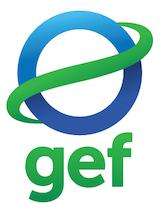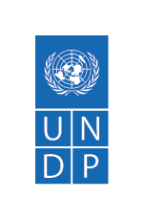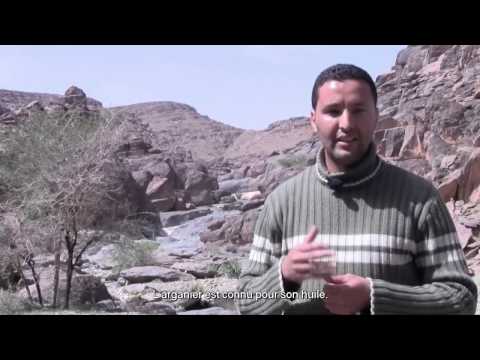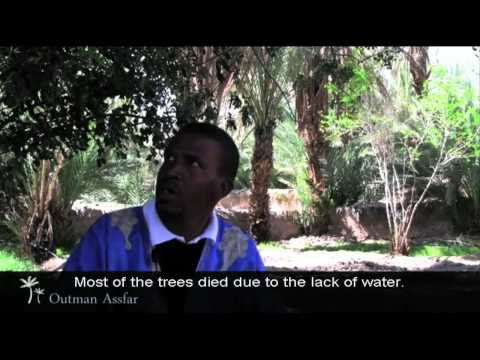CBA Morocco: Enhancing the Resilience of the Iguiwas Oasis Ecosystem to the Impacts of Climate Change (Tiflit)
This project works with a rural oasis community in southern Morocco. The village is faced with high levels of environmental degradation that are exacerbated by increasing resource demands due to population growth. Climate change is projected to increase temperatures and reduce rainfall throughout Morocco, further amplifying these effects. Declining rainfall in the Anti-Atlas Mountains will reduce the groundwater available to communities throughout southern Morocco, likely prompting land abandonment and threatening native species that define the cool Oasis microclimate.
This Community-Based Adaptation project aims to improve the Iguiwaz oasis ecosystem’s resiliency toward the risks of climate change, including variability, through reasoned water management and the institution of a local participative dialogue policy. Its activities facilitate sustainable access to and management of water, plant/replant drought-resistant crops and fodder, and regenerate the ecosystem through resilient forestry practices.
* This project is part of Morocco's Community-Based Adaptation portfolio. *
Project details
Levels of intervention
- Community
Source of funds
- Global Environment Facility - Strategic Priority on Adaptation
Key implementers
- Non-Governmental Organizations
Funding amounts
$71,210
Project partners
- Tiflit Association for Farm Water Use
- United Nations Development Programme (UNDP)
- Global Environment Facility (GEF)
- The GEF Small Grants Programme
- UN Volunteers
Introduction
This project works with a rural oasis community in southern Morocco. The village is faced with high levels of environmental degradation that are exacerbated by increasing resource demands due to population growth. Climate change is projected to increase temperatures and reduce rainfall throughout Morocco, further amplifying these effects. Declining rainfall in the Anti-Atlas Mountains will reduce the groundwater available to communities throughout southern Morocco, likely prompting land abandonment and threatening native species that define the cool Oasis microclimate.
This Community-Based Adaptation project aims to improve the Iguiwaz oasis ecosystem’s resiliency toward the risks of climate change, including variability, through reasoned water management and the institution of a local participative dialogue policy. Its activities facilitate sustainable access to and management of water, plant/replant drought-resistant crops and fodder, and regenerate the ecosystem through resilient forestry practices.
* This project is part of Morocco's Community-Based Adaptation portfolio. *





Project details
The Iguiwaz Oasis, located in the province of Tata, in Southern Morocco, has nearly one hundred families (approximately 700 residents), most of them subsistence farmers. Like all oases in the region, it is very vulnerable to the impacts of climate change. Increasing water scarcity and land erosion have been affected local living conditions, which depend on farming and the use of natural resources.
Since the late 1970s, climate change has impacted and will increasingly harm the delicate balance that allows the oasis ecosystem to function and regenerate while nourishing its inhabitants. The local farming, food-producing economy, which depends on the oasis' natural resources, is strongly affected by climatic variations, and therefore very sensitive to the impacts of climate change. Oasis agricultural productivity has decreased because of increasing water shortages coupled with poor management, along with soil depletion. Yet oases represent a vegetation and natural climate barrier against the advance of the desert. Their deterioration and the gradual abandonment of local palm groves will make it difficult to fight against desertification.
This Community-Based Adaptation project increases the Iguiwaz oasis ecosystem's resiliency to the impacts of climate change, particularly in regard to scarce water resources and accelerated soil degradation. Its comprehensive and integrated approach facilitates sustainable access to and management of water, enhances local farming through planting or replanting of drought-resistant farming species (including pilot testing of adapted fodder to sustain local livestock), and regenerates the ecosystem through resilient forestry practices (micro-dams to facilitate infiltration of water, which will in turn nourish the oasian farming, and forestry plantings to revitalize and fixate the soils). Income generation will be fostered, thus increasing local livelihood and reducing rural exodus. Capacity building and inclusive mobilization (promoted via the participatory video TIWIZI) foster sustainability and long-term vulnerability reduction. The lessons learned from the project will be disseminated for mainstreaming in local and national policies.
- Community
- Non-Governmental Organizations
- Tiflit Association for Farm Water Use
- United Nations Development Programme (UNDP)
- Global Environment Facility (GEF)
- The GEF Small Grants Programme
- UN Volunteers
$71,210
News
Key results & output
Result 1.0: Access to water for farming is facilitated and irrigation water resources management is improved
Establish a collective well equipped with a motor pump (Product 1.1) and establish an experimental drip irrigation system (Product 1.2) to cover irrigation water needs over approximately 3.5 ha.
Result 2.0: Forestry ecosystem and oasis farming made resilient to reduced water resources and soil degradation
Plant experimental farming and arboreal species (Output 2.1), along with resilient forest species (Output 2.2) to reduce erosion and water use.
Result 3.0: Reinforced community capacity to adapt sustainably
Implement an awareness-raising programme for sustainable water management and resilient agropastoral and forestry practices, including training on sustainable farming and irrigation (Output 3.1).
Result 4.0: Lessons learned capitalized and communicated to sustain local and regional policies
Produce participative documentary highlighting community contributions (see video) (Product 4.1). Community representatives participate in meetings with other oasis project leaders and present the adjustment plan to other communities (Product 4.2). Conduct a midway evaluation to assemble lessons learned and adjust course where necessary (Product 4.3) and organize a final evaluation/capitalization workshop (Product 4.4).
Reports & publications
Videos & multimedia
Monitoring & evaluation
Monitoring and evaluation for community-based adaptation is a new field, and the CBA project is piloting innovative approaches to evaluating the success of locally-driven adaptation projects, and generating lessons to inform ongoing practice.
Key considerations in M&E for CBA include:
- Grounding M&E in the local context: M&E for CBA should avoid overly rigid frameworks, recognizing community heterogeneity and maintaining local relevance
- Capturing global lessons from local projects: CBA projects are highly contextualized, but lessons generated should be relevant to stakeholders globally
- Incorporation of both quantitative and qualitative indicators: to ground projects in tangible changes that can be objectively evaluated, and to capture lessons and case studies for global dissemination
To these ends, the CBA project uses three indicator systems: the Vulnerability Reduction Assessment, the Small Grants Programme Impact Assessment System, and the UNDP Climate Change Adaptation Indicator Framework.
The Vulnerability Reduction Assessment (VRA)
The VRA is a question-based approach with the following aims:
- To make M&E responsive to community priorities
- To use M&E to make projects more accountable to local priorities
- To make M&E capture community ideas and local knowledge
- To gather community-level feedback to guide ongoing project management
- To generate qualitative information
- To capture lessons on specific issues within community-based adaptation
- To generate case studies highlighting adaptation projects
The VRA follows UNDP's Adaptation Policy Framework, and is measured in a series of meetings with local community stakeholders. In these meetings, locally-tailored questions based on standard VRA questions/indicators are posed, and the community assigns a numerical score on a 1-10 scale for each question. Progress is evaluated through changes in scores over the course of implementation, as well as through qualitative data collected in community discussions surrounding the exercise.
UNDP has developed a Users Guide to the VRA (Espanol) (Francais) as a tool to assist practitioners to conceptualize and execute VRA measurements in the context of CBA projects.
The SGP Impact Assessment System (IAS)
The CBA, being a project of the GEF Strategic Priority on Adaptation, aims to increase the resilience of ecosystems and communities to the impacts of climate change, generating global environmental benefits, and increasing their resilience in the face of climate change impacts. To this end, the CBA projects use the SGP's impact assessment system for monitoring achievements in GEF focal areas (focusing primarily on biodiversity and sustainable land management).
The IAS is composed of a number of quantitative indicators which track biophysical ecosystem indicators, as well as policy impact, capacity development and awareness-building.
UNDP Climate Change Adaptation Indicator Framework
CBA projects also track quantitative indicators from UNDP's adaptation indicator framework, corresponding to the thematic area on natural resources management. More information on UNDP's indicator framework can be found on the UNDP climate change adaptation monitoring and evaluation website.
* This description applies to all projects implemented through UNDP's Community-Based Adaptation programme. Specific details on this project's M&E will be included here as they become available. *
Newsfeed
Contacts
- UNDPCBA Project Management Unit



